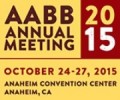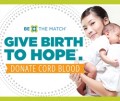You are here
News
2015
Dec 2015 Our tagline at STEMCELL Technologies is Scientists Helping ScientistsTM. This was born organically when someone used it in a meeting, and it stuck because it really describes what we do. Everyone at STEMCELL is passionate about the pursuit of scientific knowledge and our mission to create innovative tools and resources for scientists.
Nov 2015 Parent's Guide to Cord Foundation has issued the world's first Cord Blood Industry Report that is based on direct interviews of family cord blood banks around the world. All participating companies were promised confidentiality, hence their proprietary data is only presented in aggregates. The landing page of the report displays an Abstract of the contents, and the Access page explains the subscription procedure. In this article we present a preview of some interesting results.
Nov 2015 In July 2015, Cord Blood Registry® (CBR®) and the National Association of Hispanic Nurses® (NAHN®) announced that the two organizations have entered into a collaboration focused on educating health care providers and the public about the importance of preserving cord blood stem cells. Through active counseling to promote informed decision making by Latina expectant mothers, CBR and NAHN will strive to reach an increasing number of Hispanic families that may benefit from the storage or donation of cord blood stem cells. The partnership will offer cord blood stem cell education and outreach to Hispanic nurses in the form of continuing medical education, materials support, and online resources for those healthcare professionals working with Latino expectant parents.
Nov 2015 Hispanics in the State of New Jersey now comprise the largest minority, making up nearly 18% of the State's population or roughly 1.5 million residents (US Census Bureau, 2010). Despite the nursing profession numbering 3 million registered nurses in the United States, only 3.6% of these are Hispanic, or of Latino origin (AACN Diversity in Nursing, 2015). At the local and state level the National Association of Hispanic Nurses (NAHN) Garden State Chapter was formed to help bridge the equity and health disparities that exist within Hispanic communities in New Jersey (NJ).
Oct 2015 Somatic cells may be scientifically defined as "A cell within the developing or developed organism with the exception of egg and sperm cells".1 In the context of hematopoietic stem cell transplantation, the term is most often used to refer to non-hematopoietic cells that might be used for other cellular therapies. Pancreatic islet cells for transplantation in diabetic patients are one example of somatic cells. Mesenchymal stromal cells (also called mesenchymal stem cells or MSC) are another somatic cell type. MSCs have received increased attention in recent years.
Oct 2015
The birth of a child is a one-time opportunity to harvest from the umbilical cord blood those stem cells that can rebuild and replenish a patient's blood and immune systems, and provide regenerative therapy. Unlike stem cells that come from bone marrow or peripheral blood, it is not possible to return to the source if the stem cells are lost or damaged. Thus proper freezing (cryopreservation) and storage for future transplantation are of the utmost importance for cord blood cells.
Sep 2015 Matthew Farrow, then a 5 year old boy with Fanconi anemia, received the world's first cord blood transplant on 6 Oct. 1988. The pioneering medical event was an international effort: Matthew came from North Carolina USA, his donor was his newborn baby sister, the American scientist who stored the cord blood was Dr. Hal Broxmeyer, and the transplant was performed at the French Hôpital Saint-Louis in Paris, where his physician was Dr. Eliane Gluckman. Matt is now 32 years old, married, and a father.
Sep 2015 Childhood Cancer Awareness? What does it mean? We do see commercials that pull at the heartstrings with kids and celebrities, asking us to give to hospitals. We give to research, but does that pay for families to get to and from treatments, and does it replace lost income? No.
Sep 2015 October is the anniversary of the first umbilical cord blood transplant and it marks an important opportunity to increase understanding among expectant parents and the public about cord blood options.










